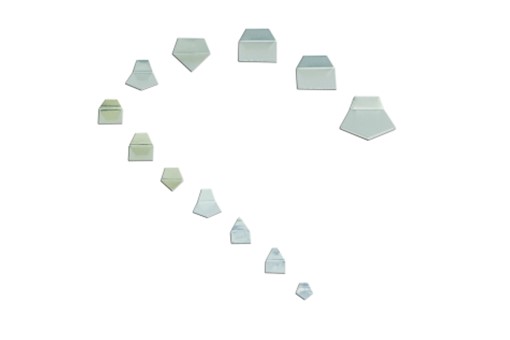Shedding in chickens and useful care tips during this period

 PIONEER MEIZHENG BIO-TECH (5 in1) JC1165 / Rapid tests for the determination of the residual amount of halofuginone, flavomycin, novobiocin, flunixin, dexamethasone / prednisolone in milk, whey
PIONEER MEIZHENG BIO-TECH (5 in1) JC1165 / Rapid tests for the determination of the residual amount of halofuginone, flavomycin, novobiocin, flunixin, dexamethasone / prednisolone in milk, whey Rapid tests for fluoroquinolone, erythromycin, lincomycin, tillosin and tilmycosin residues in milk, whey
Rapid tests for fluoroquinolone, erythromycin, lincomycin, tillosin and tilmycosin residues in milk, whey
With the onset of autumn, some chickens turn into walking "feather bombs" or look like they've survived a brutal fight with a hawk. We tell you how to help birds quickly restore feather cover
Hens molt to naturally renew their feathers for the winter, pushing out old ones and making room for new ones. At the same time, some birds may lose almost all their plumage at once, while others molt in patches.
Since the molting process starts a decrease in daylight hours, the process falls on the autumn period, although there are differences here: some birds molt in early autumn, others closer to winter. Young animals less than one year old may not shed at all during the first autumn or winter.
Also, the duration of the molt will vary for each individual bird and can range from several weeks to several months. And although this is a completely normal process, additional care will not hurt, since there is a loss of nutrients, and the “naked” chicken has a pretty bad mood.
As a rule, during molting, the activity of chickens decreases. You may notice that moulting birds even sit differently, avoiding pressure on areas that are too exposed.
Therefore, try to provide the birds with clean bedding, do not pick it up unnecessarily.
In addition to a decrease in activity, appetite is also lost due to a slowdown in metabolism. Scallops and beards decrease in size and turn pale - a sign that indicates an imminent drop in egg production.
During molting, laying hens rest from laying eggs. A sudden drop in egg production can be a signal that shedding is about to begin, weeks before you notice feather loss.
What to feed
You probably know that chicken feathers are made from the same material as your hair and nails, keratin, a very light but strong protein. And to build a new feather, the birds will need more protein in the feed than usual.
Here are some ways to increase the protein ingredient:
1. A standard laying hen diet is about 16% protein, so it is best to increase the protein content of the diet to 20% during shedding. If you decide to go down this path, avoid sudden dietary changes. Instead, mix the feeds slowly over the course of a week, gradually increasing the ratio of new feed to current feed. When switching back, perform the same transition.
2. Offer protein-rich treats such as scrambled eggs or boiled eggs to keep chickens from becoming addicted to the taste of raw eggs.
3. Boiled fish is a great high protein snack with healthy omega-3 oils! Some chickens are so fond of fish that they themselves catch small fish in streams and ponds, if they have the opportunity. If the chickens or you do not have access to fishing, an ordinary can of sardines or tuna once a week will definitely please the bird. The remains of shrimp from the master's table will also become an excellent delicacy.
However, remember that chickens are only satisfied with a fish day during molting or during cold weather. It is not worth it to part with such top dressing and feed the birds with fish every day. There is a lot of protein in fish - from 61% to 72%. And high-protein diets are known to cause kidney problems and obesity in poultry.
4. Sunflower seeds, in addition to protein, contain methionine, which is an important amino acid for birds and promotes feather growth.
5. Seed sprouts are useful to give twice a week. Sprouts have more nutrients, enzymes and proteins than whole seeds and are easily digestible.
Finally, don't be alarmed when chickens eat their own fallen feathers. After all, they are a great source of protein too! However, take this as a signal that the birds did not get the protein in the feed. Adjust the nutrition and be patient, because the hens will begin a full-fledged laying after replacing all the plumage.
Read together with it:
- New Products and Volume Growth. The Ministry of Agriculture and Food on the Dairy Industry Development Strategy through 2035.October 16, MINSK . Maria Klimova, Deputy HEAD of the Main Directorate for Processing Industry at the Ministry of Agriculture and Food, spoke about the key areas of the dairy industry development strategy through 2035 at the plenary session of the 11th International Forum "Dairy Belarus," BelTA reports. Klimova noted that while last year saw stagnation among the world's major dairy producers, this...
- Beef prices in Russia continue to rise: reasons and forecastsExperts cite increased demand from major consumers such as the United States and CHINA as the main reason for this growth . This trend is also expected to impact the Russian market, with beef prices potentially rising by 12-15% in the coming months. Most Russians now view beef as a delicacy, while their everyday diet relies on more affordable pork and chicken. One of the main reasons for the curre...
- A key element of a healthy lifestyle. An expert reminded us of the importance of proper nutrition.October 7, MINSK . Snezhana Kavrigo, HEAD of the Minsk City HEALTH Center, reminded patients of the importance of proper nutrition, a BELTA correspondent reports. "I urge our patients to watch what they buy. No matter where you are, something can spoil. As a consumer myself, I constantly watch and try new things, but it's the human factor," urged Snezhana Kavrigo. She noted that this advice also a...
- Where are businesses investing? We found out which Belarusian city a protein bar manufacturer has chosen for investment.For several years now, every third ruble in the budget has come from private business. Moreover, manufacturing ranks high on the list of the most in-demand areas of activity. Why did a protein bar manufacturer choose this particular district for investment? What enterprise employs entire families here, one way or another? We HEAD to Bykhov to understand why it's so attractive to entrepreneurs. One...
- Shashlik, meatballs, goulash, borscht. We looked at what school meals are available for children and how much they cost.School meals play a key role in developing healthy habits in children and adolescents, providing them with the necessary nutrients for healthy growth and development. Proper nutrition at school not only improves students' physical fitness but also impacts their concentration, academic performance, and overall well-being. In today's world, where children are faced with the temptations of fast food ...
- Changes in the food market: rising meat prices and falling vegetable pricesThe Consumer Price Index (CPI) for the period was 99.92%, down from the beginning of the month to 99.99%. Since the beginning of 2025, price growth has reached 4.1%, indicating a slowdown in inflation compared to the previous year. One of the key trends was the rise in MEAT prices . Beef , lamb , and SUGAR increased in price by ......
- What Factors Reduce Testosterone Levels? Let's Talk LifestyleTopic newsIs it possible to simply inject testosterone if its level has dropped? In the BELTA project "In the subject. Health" urologist-andrologist Alexander Batsenko spoke about the level of this hormone and its impact on men 's HEALTH . - My position is this: we need to do everything in a reasonable way. In nature, animals also have testosterone. And men have always had it. Perhaps due to envir...
- There is no accounting for taste when it comes to the products of these nominees for the "Leader of the Year - 2025" business awardThe products of the Soligorsk Poultry Factory and the Kobrin Butter and CHEESE FACTORY have appeared on the table of each of us at least once. And some of us have even become their fans over the long period of existence of these enterprises. The experts of the business award "Leader of the Year - 2025" visited the most famous production facilities of Kobrin and Soligorsk and were convinced: here t...
- The Belarusian household's monthly budget in the second quarter amounted to Br2,790.4.August 28, MINSK . In Belarus, in the second quarter of 2025, disposable resources per household amounted to Br2,790.4 per month. This follows from the data of a sample survey published on the website of the National Statistical Committee, BELTA reports. Disposable resources per household in cities and urban-type settlements amounted to Br2,923.8 per month, in rural settlements - Br2,361.3 per mon...
- A fun guide to Vietnam. What awaits you there?12 Vietnam is a wonderful option for a warm vacation, but it's not yet very popular among Belarusians. Guides call it "Thailand on a budget," or a country where you can relax in peace. The main year-round resort there is the city of Nha Trang and its surrounding metropolitan area. The only drawback to such a vacation is, perhaps, the cost of airfare. Is it easy to get to South Vietnam? During the ...


























































